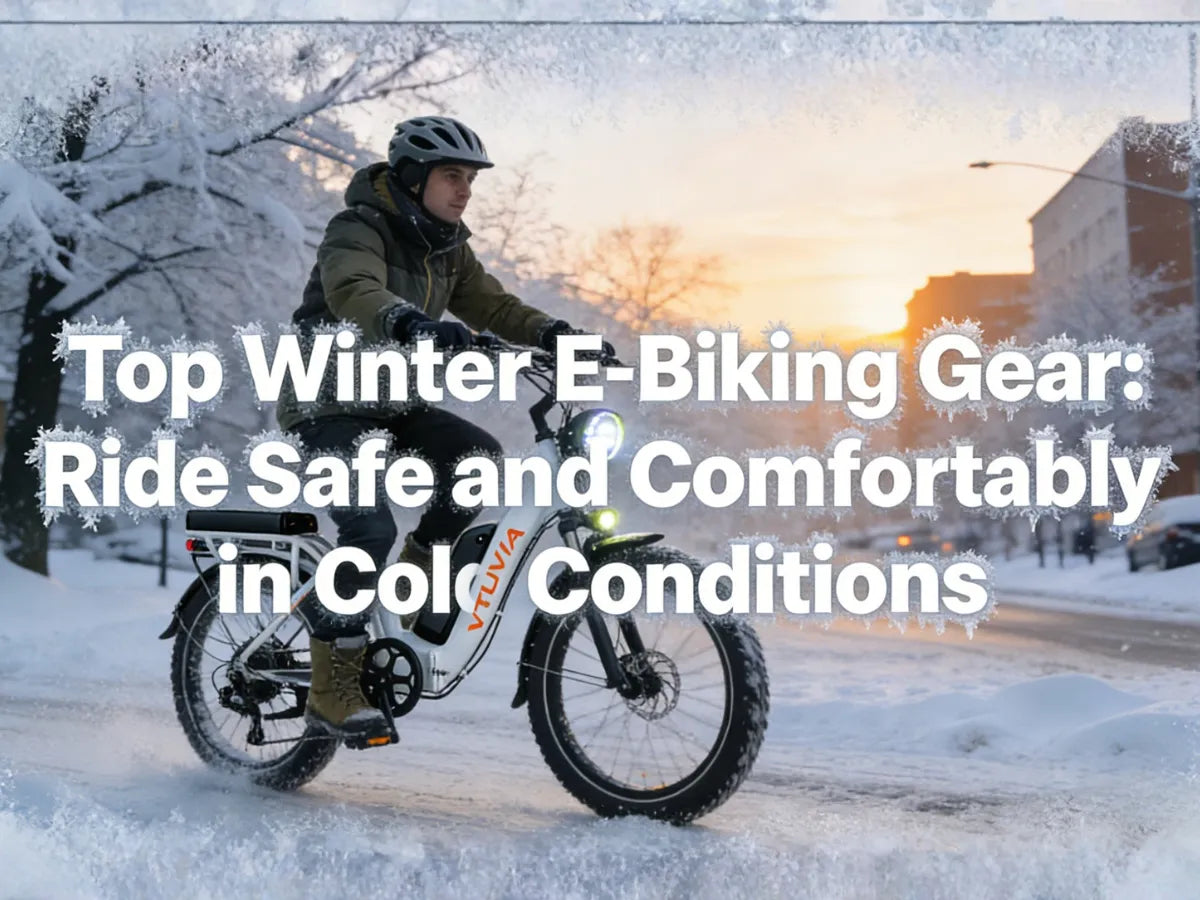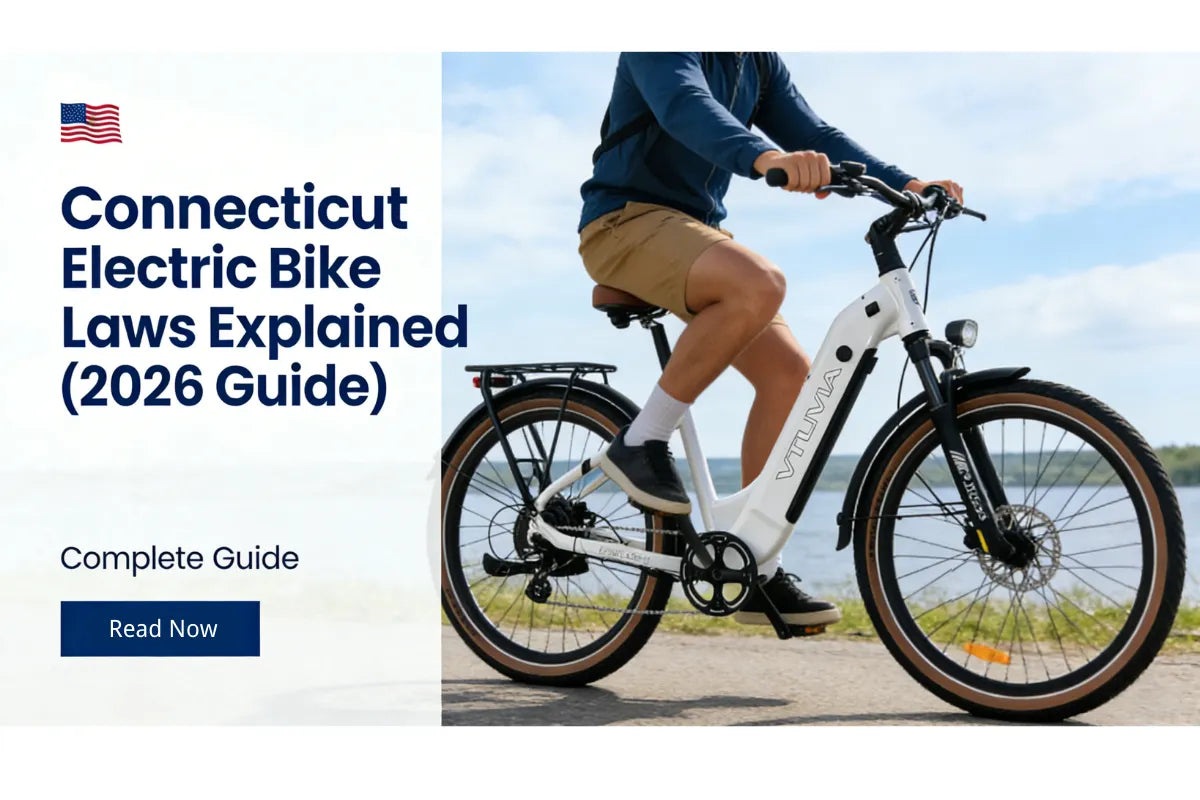Readable, actionable legal and compliance guidance for riders, delivery fleets, retailers, and manufacturers — covering Class 1, 2 & 3, federal basics, state differences, NY & NYC specifics, safety, purchase checklist, and future trends. Last updated: Nov 24, 2025.
Why eBike Laws Matter
Electric bikes have exploded in popularity. That growth brings safety questions, mixed legal frameworks, and confusion for riders, retailers, and fleets. Laws define:
- What counts as a bicycle vs. a motor vehicle
- Where each class of eBike can be ridden (roads, bike lanes, trails)
- Equipment and helmet requirements
- Whether registration, license, or insurance are required
Understanding Electric Bike Classifications (Class 1 / 2 / 3)
What the classes mean
Most U.S. states and many industry references use a three-class system. Below is the standard definition you should use when buying, marketing, or operating eBikes.
| Class | Primary characteristic | Max assist speed | Throttle allowed? | Typical restrictions |
|---|---|---|---|---|
| Class 1 | Pedal-assist only | 20 mph (32 km/h) | No | Allowed on most bike lanes and many multi-use paths |
| Class 2 | Throttle or pedal-assist | 20 mph (32 km/h) | Yes (throttle) | Some trails/local ordinances restrict throttle use |
| Class 3 | Pedal-assist only — higher speed | 25–28 mph (40–45 km/h) — state-dependent | No (generally) | Age/helmet limits; restricted from some bike paths; local rules vary |
Key details to include in your content
- Precise speed numbers (20 mph for Class 1/2; Class 3 varies by state — commonly 25–28 mph).
- Define the difference between throttle and pedal-assist (throttle lets the motor run without pedaling).
- Explain that class labeling and manufacturer stickers are commonly required by law.
Federal Law & the Role of CPSC
The Consumer Product Safety Commission (CPSC) offers a federal definition that affects product safety and manufacturing standards (for example: motor output, speed limits for being considered a "low-speed electric bicycle"). However, CPSC does not set rules about where you can ride, helmet laws, registration, or insurance — those are state or local.
What federal rules typically cover
- Manufacturing safety standards for low-speed electric bicycles (components and labeling).
- Guidance on power and speed thresholds used to differentiate bicycles from motor vehicles for consumer safety rules (e.g., motor wattage and top speed thresholds used in product classification).
What federal law does not cover
- Local rideability (bike lane vs. road vs. trail)
- Helmet rules and age limits
- Registration, licensing, and insurance for on-road operation
State-by-State Snapshot: Who’s strict and why it matters
This section summarizes national patterns so you can prioritize blog topics. Laws are constantly evolving — this snapshot is a starting point for deeper state pages.
States commonly viewed as stricter or to watch
- New York — strong local regulation in NYC + emerging moves on weight/power for "heavy fast" eBikes.
- California — active local policies, helmet and class-based nuances, and focus on speed/class labeling.
- Massachusetts, New Jersey, Connecticut — notable for helmet rules, enforcement, and local ordinances.
- Hawaii — special restrictions on high-power bikes and certain paths.
Deep Dive — New York State eBike Laws
This section consolidates NY state law, municipal practices, and the most discussed policy proposals (weight/power regulations, delivery fleet rules). Use this as the authoritative New York chapter in your skyscraper post.
Short legal primer
- New York recognizes Class 1/2/3 designations; Class 3 definitions often set the top assist at 25 mph (state law gives NYC specific permissions for higher-class use).
- Manufacturers are generally required to label eBikes with class, maximum assisted speed, and motor wattage.
- There are statewide provisions restricting eBike use on roads with posted speed limits greater than a threshold (commonly 30 mph) — local rules may vary.
Where you can ride in New York State
- Roads: Allowed on most roads where bicycles are allowed (subject to posted speed limits and local exceptions).
- Bike lanes: Generally allowed, but Class 3 may have extra restrictions in some municipalities.
- Multi-use paths / trails: Often allowed for Class 1; many trails and parks restrict Class 2/3 — check local parks rules.
- Sidewalks: Usually prohibited except where local ordinance explicitly allows it.
Helmet, age, and equipment rules in NY

- Common age minimum: 16+ to operate motorized bicycles in many NY localities (confirm local code).
- Helmet rules: Class 3 riders often subject to mandatory helmet laws and younger riders may have universal helmet requirements.
- Required equipment: lights, reflectors, bell, brakes that meet bicycle equipment standards.
Enforcement trends & emerging policy (2024–2025)
Recent attention in NY has focused on:
- Heavy & fast eBikes (100 lb+ or very high motor wattage): proposals have aimed to reclassify some of these as mopeds or light motorcycles, which would trigger registration, insurance, and licensing requirements.
- Delivery fleets: Safety oversight and employer obligations (helmet provision, training) are under active discussion in cities.
- Battery safety & fires: Fire code and battery transport/storage rules are increasingly important for fleets and retailers.
Actionable NY authoring notes (to include in your article)
- Include a clear NY-specific compliance checklist (see the global checklist below but add NY caveats).
- Use local examples & recent news items (e.g., proposals on heavy eBikes) to make the article timely.
- Compare NYC rules vs. upstate — local differences are a high-value content angle.
Special Focus — NYC eBike Regulations
New York City has unique enforcement priorities and local rules that make a dedicated NYC section essential for any authoritative post.
Key NYC-specific rules
- City-level speed policies and targeted enforcement programs for delivery riders and illegal conversions.
- Class 3 usage is tightly controlled in many parts of the city; helmet rules and age minimums are emphasized for public safety.
- Sidewalk riding is commonly targeted by enforcement in dense pedestrian areas.
Common NYC enforcement issues to cite
- Modified eBikes that exceed safe speeds or have removed limiters.
- High-powered bikes operated on bike lanes or sidewalks used to deliver goods.
- Battery storage and charging safety in multi-unit residential buildings.
Story hooks for NYC content
- Interview a local delivery rider on helmet & battery safety practices.
- Case study: an NYC neighborhood crackdown or municipal pilot program.
- Side-by-side: NYC enforcement vs. typical small upstate town approach.
Safety Requirements & Battery Rules
Safety rules are increasingly strict and often the driver of new regulation. Don’t ignore battery safety — it’s the new compliance frontier.
Common safety equipment requirements
- Helmet requirements — state/local variations (Class 3 often stricter).
- Lights and reflectors for night riding.
- Functional brakes & audible warning device (bell).
Battery & fire safety (must-haves for retailers & fleets)
- Prefer UL-certified batteries and chargers (UL standards like 2849 and others are becoming a baseline for fleets).
- Store and ship batteries per manufacturer and carrier rules; declare lithium-ion batteries when shipping.
- Provide battery charging guidance and safe storage info to buyers (display prominently on product pages).
Registration, Licensing & Insurance — When they apply
Most eBikes that fit the Class 1/2/3 definition (and stay under specified watt/speed thresholds) do not require registration or driver's license in most states. However, that is changing where lawmakers reclassify heavy/fast eBikes as mopeds or motor vehicles.
When registration / licensing may be required
- If an eBike exceeds state wattage/speed thresholds and is reclassified as a moped/motor vehicle.
- When local ordinances explicitly require permits for commercial delivery fleets.
- When a vehicle is incapable of being classified as a “low-speed electric bicycle” under federal/product safety definitions.
Insurance notes
- Personal liability insurance for eBikes is rarely required but increasingly recommended, especially for fleets and high-powered models.
- Fleets should consult commercial policy advisors for employer liability and cargo protection.
Off-Road, Trails & Park Rules
Trail and park rules vary widely. Many mountain-bike trails prohibit motorized use; multi-use paved paths are more permissive for Class 1 bikes.
General rules
- Class 1 typically allowed on many bike paths and paved multi-use trails.
- Class 2 and Class 3 are commonly restricted from unpaved, single-track mountain-bike trails.
- Always check the specific park or trail manager (state parks, National Park Service, US Forest Service).
Buying a Legal eBike — Practical Compliance Checklist
Before you buy (quick checklist)
- Confirm the Class (1/2/3) — labeled on the bike or product page.
- Confirm maximum motor wattage and top assisted speed.
- Check for UL-certified battery and charger.
- Read your state's local eBike rules for helmet, age, and where you can ride.
For retailers & brands
- Include a clear label on the frame: class, max assist speed, motor wattage.
- Provide user documentation on local laws and safe battery handling.
- Offer a merchant note about modifications: voids warranty and may make the bike non-compliant.
For fleet managers
- Require helmets & training for riders.
- Use UL-rated batteries and have secure charging stations.
- Maintain proof-of-compliance documentation for bikes in your fleet.
Common Myths About eBike Laws
-
Myth: “All eBikes need insurance.”
Reality: Not typically for compliant Class 1/2/3 bikes, but heavy or reclassified vehicles may require policies. -
Myth: “Throttle bikes are illegal everywhere.”
Reality: Throttle legality varies — allowed in many states (Class 2) but restricted on some trails or in some cities. -
Myth: “More watts = automatically illegal.”
Reality: It depends on state thresholds; some states reclassify higher wattage bikes as motor vehicles. -
Myth: “NYC has banned all eBikes.”
Reality: NYC permits many eBike types but enforces strict rules on modified/high-powered bikes and sidewalk riding.
The Future of eBike Laws — What to watch (2025–2030)
Regulation is evolving fast. These trends are likely to shape the next 3–5 years:
- Battery & fire safety standards — more UL/standard requirements for consumer and fleet batteries.
- Weight & power thresholds — some jurisdictions consider weight limits (e.g., 100 lb) to reclassify heavy eBikes as mopeds.
- Local enforcement tech — speed cameras and location-based enforcement pilots may emerge in big cities.
- Standardized labeling & product passports — easier to verify class and compliance at point of sale and for fleet audits.
Frequently Asked Questions
- Are Class 3 eBikes legal in New York?
- Class 3 eBikes are generally recognized under NY law, but NYC and other localities may impose additional age, helmet, or riding-area restrictions. Always verify local regulations.
- Can I ride an eBike on NYC sidewalks?
- Riding on sidewalks in NYC is frequently prohibited and is a common enforcement priority; exceptions may exist in less populated areas. Check local signage and municipal code.
- Do eBikes need insurance?
- Most compliant Class 1 and 2 eBikes do not legally require insurance, but if a vehicle is reclassified as a moped or motor vehicle (often due to power/weight), insurance and registration may be required.
- Are throttles legal in NYC?
- Throttle use is class-dependent; many places allow Class 2 throttles but prohibit their use on certain paths. NYC enforcement tends to focus on modified and unsafe use rather than new compliant Class 2 devices.
- Is a 1000W bike legal in the U.S.?
- Not necessarily. Many states and federal guidance use thresholds (commonly 750 W for 'low-speed' eBikes). A 1000W bike often falls into a more regulated category and may be treated as a motor vehicle by some jurisdictions.
- Can the police confiscate my eBike?
- Yes — if it is illegal (unregistered motor vehicle when it should be registered, or an unsafe/modified vehicle) officers may impound or seize it under local law enforcement procedures.





Share:
Motorcycles Feel Too Dangerous? Why Fat Tire Electric Bikes Are the Better Choice
Florida Electric Bike Laws: The Complete 2025 Guide